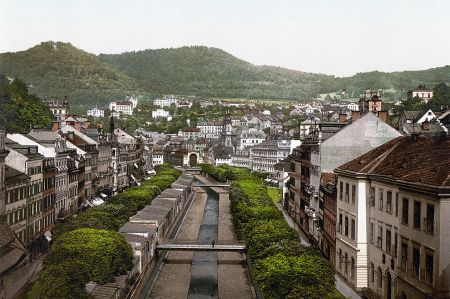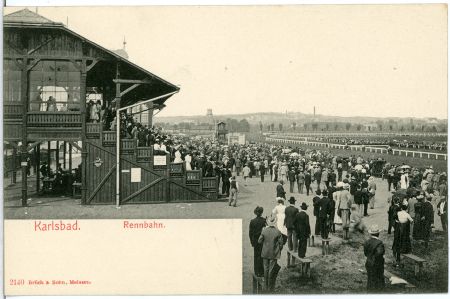Karlovy Vary thermal springs - historical development
- Written by Portal Editor
The healing properties of Karlovy Vary's thermal springs were well known as early as the 14th century. There is a legend about the discovery of the warm springs, according to which a thirsty deer is said to have uncovered the first warm spring with his hooves.
The so-called Deer's Leap (Jelení skok) above the valley of the Teplá with the main promenade also reminds of this.
First used for baths, then for drinking cures

On May 9, 1582, the city was inundated by a strong flood and on August 13, 1604 it was almost completely destroyed by fire. The Thirty Years' War also left its mark. Karlovy Vary recovered only slowly. In 1707, however, Emperor Joseph I confirmed all the privileges as a free royal city. The spa business was promoted primarily in 1711 and 1712 by the visits of the Russian Tsar Peter the Great. In 1711 the city's first spa was built. In 1759 another fire destroyed a large part of Karlovy Vary. The use for cures was then decisively promoted by the doctor David Becher. He had published a paper on spa treatment in Karlovy Vary and encouraged the promotion of Karlovy Vary sparkling salt. In 1795 a spa fee was introduced, with the help of which the town was to be rebuilt.

In the middle of the 19th century, bathing experienced a significant boom. With his publications on the Bohemian spas and the effects of their medicinal waters, the balneologist and imperial personal physician Josef von Loeschner helped Karlsbad to flourish as a world-renowned health resort. The decisive factor was the connection to the European railway network in 1870. First, operations were started on the Karlsbad–Eger line, followed shortly afterwards by the Prague–Karlsbad line.
On November 24, 1890, the city was again hit by a flood.
Loan of 500 marks from the city of Karlsbad on October 1, 1892
The town has well-preserved historical spa facilities, including the White Colonnade, Market Colonnade (1883 by Fellner and Helmer), Mill Colonnade (1871–1881 by Josef Zítek), Park Colonnade (Garden Colonnade), Spring Colonnade (1969–1975 by Prof. Votruba) and the palace colonnade (1911–1913 by Friedrich Ohmann). In all of the colonnades mentioned there are healing wells (pramen), the temperature of which is sometimes over 60° Celsius.
Snake Spring in the Park Colonnade
A total of 89 outflows of mineralized thermal water have been documented in the central spa area, 19 of which are natural medicinal waters approved under the Spa Act. It is hypotonic, strongly mineralized spring water of the Na-HCO3SO4Cl type (alkaline, contains Glauber's salt).
Please read as well:
